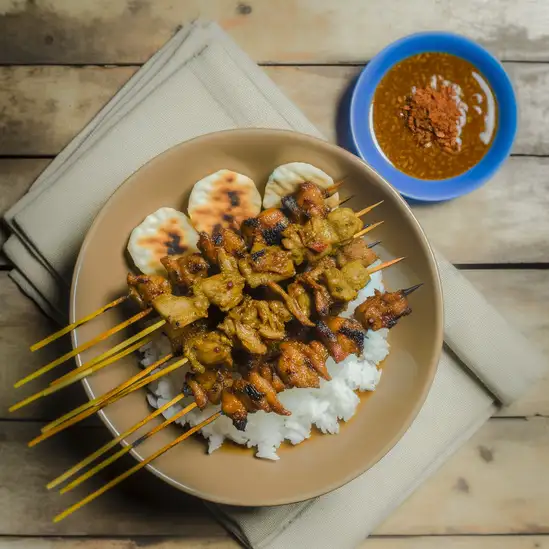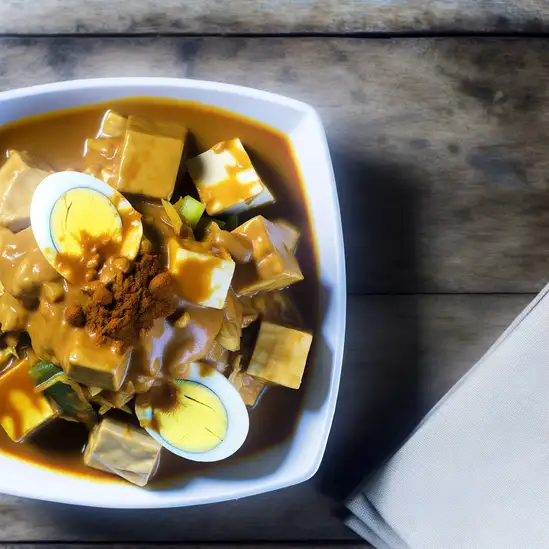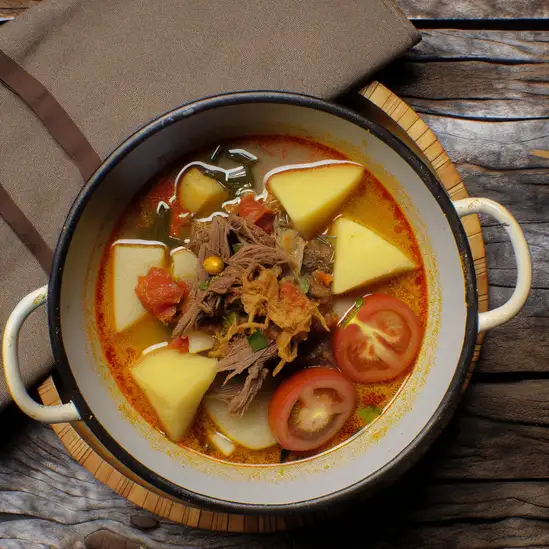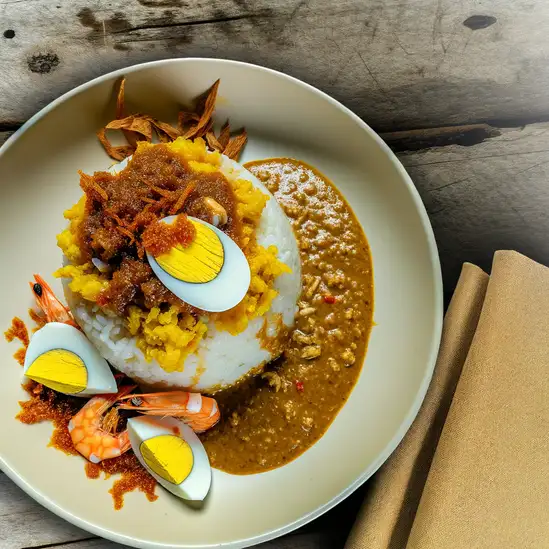


Jakarta is this vibrant,buzzing metropolis that feels alive in every corner. The moment you step out,you’re greeted by a symphony of sounds—honking scooters weaving through traffic,street vendors calling out their wares,and the distant hum of traditional gamelan music blending with modern beats. The air carries a mix of aromas:sizzling satay grilling over charcoal,sweet jasmine from roadside flower stalls,and the unmistakable scent of fresh tropical rain on warm pavement. It’s a city that never quite slows down,but somehow,it never feels overwhelming. What’s truly captivating about Jakarta is its layered personality. You can wander through the historic old town,Kota Tua,where Dutch colonial buildings stand side by side with lively street art,then slip into a quiet café to sip on rich,locally brewed kopi tubruk. The city’s heart beats with a mix of cultures—Javanese,Betawi,Chinese,and beyond—each adding their own flavor to the bustling markets and vibrant festivals. It’s a place where tradition and modernity dance together,creating a unique rhythm that’s both familiar and surprising. And the people! Jakartans are warm and welcoming,often eager to share stories or recommend their favorite street food stalls. Whether you’re tasting the fiery sambal or exploring the sprawling malls and hidden alleys,Jakarta invites you to dive in,get a little lost,and discover its many layers. It’s messy,colorful,and endlessly fascinating—a city that stays with you long after you’ve left.
The information on this page is currently being reviewed by Tripkliq and should be used as a guide only
Eng word: Hello
Eng pronunciation: Ha-lo
Local language: Halo
Eng word: Goodbye
Eng pronunciation: Se-la-mat ting-gal
Local language: Selamat tinggal
Eng word: Thank you
Eng pronunciation: Te-ri-ma ka-sih
Local language: Terima kasih
Eng word: How much
Eng pronunciation: Be-ra-pa
Local language: Berapa
Eng word: Toilet
Eng pronunciation: Toi-let
Local language: Toilet
Eng word: Help me
Eng pronunciation: To-long sa-ya
Local language: Tolong saya
Eng word: Yes
Eng pronunciation: Ya
Local language: Ya
Eng word: No
Eng pronunciation: Ti-dak
Local language: Tidak
Eng word: Excuse me
Eng pronunciation: Per-mi-si
Local language: Permisi
Jakarta, originally known as Sunda Kelapa, was founded in the 4th century. It has grown from a small port town into the bustling capital city of Indonesia.
In the 16th century, the Portuguese arrived in Jakarta, followed by the Dutch who established Batavia in 1619. Batavia became the center of the Dutch East Indies.
Jakarta played a crucial role in Indonesia's independence. On August 17,1945, Sukarno and Mohammad Hatta proclaimed Indonesia's independence in Jakarta.
The National Monument, or Monas, was built to commemorate Indonesia's struggle for independence. It stands 132 meters tall and is a symbol of Jakarta.
Opened in 1975, Taman Mini Indonesia Indah is a cultural park that showcases the diverse cultures of Indonesia. It features traditional houses, museums, and performances.
Kota Tua is the historic heart of Jakarta, featuring Dutch colonial buildings, museums, and the iconic Fatahillah Square. It offers a glimpse into Jakarta's colonial past.
Completed in 1978, Istiqlal Mosque is the largest mosque in Southeast Asia. It was built to symbolize Indonesia's independence and religious tolerance.
Located opposite Istiqlal Mosque, Jakarta Cathedral was completed in 1901. It is an architectural marvel and a symbol of religious harmony in Jakarta.
Ancol Dreamland, established in 1966, is Jakarta's largest recreational park. It features a theme park, water park, art market, and various entertainment options.
In Jakarta, the most common Power Adaptor is Type C, Type F.



A popular Indonesian fried rice dish cooked with kecap manis (sweet soy sauce), shallots, garlic, tamarind, and chili, often served with a fried egg, prawn crackers, and pickles.

Skewered and grilled chicken marinated in a mixture of soy sauce, shallots, garlic, and other spices, served with a peanut sauce and rice cakes.

A traditional Indonesian salad made with mixed vegetables, tofu, tempeh, and hard-boiled eggs, topped with a peanut sauce dressing.

A beef soup dish originating from Jakarta, made with coconut milk, beef, tomatoes, and potatoes, flavored with a mix of spices and herbs.

A traditional Betawi dish made of glutinous rice cooked with egg, dried shrimp, and fried shallots, served with a spicy coconut and peanut sauce.
Bali feels like stepping into a vibrant dream where every corner pulses with life and warmth. From the moment you arrive,there’s this unmistakable energy—part spiritual,part playful—that wraps around you like a soft,tropical breeze. Imagine waking up to the gentle rustle of palm leaves and the distant sound of waves crashing against volcanic black sand beaches. The air carries a mix of frangipani blossoms and salty sea spray,instantly grounding you in the island’s natural beauty.
What really makes Bali special is its rich culture woven into everyday life. You’ll see locals in colorful sarongs offering flowers at temple steps,hear the rhythmic beat of gamelan music drifting through the air,and catch glimpses of intricate wood carvings and vibrant paintings in small artisan shops. The island’s spirituality isn’t just something you observe—it’s something you feel,a quiet presence that invites you to slow down and connect.
And then there’s the food—oh,the food! Freshly grilled satay,fragrant nasi campur bursting with spices,and tropical fruits so sweet they almost taste like candy. Whether you’re dining in a bustling market or a cliffside café overlooking the ocean,every bite feels like a celebration of Bali’s rich flavors and traditions. Honestly,Bali isn’t just a place you visit; it’s a place that stays with you,long after you’ve left.
Imagine stepping into a city where sleek skyscrapers meet lush greenery,and every corner hums with a vibrant energy that’s both modern and deeply rooted in tradition. That’s Singapore for you—a place where the air carries the fragrant mix of blooming orchids and sizzling street food,and the streets buzz with a blend of languages and laughter. Walking through neighborhoods like Chinatown or Little India,you’ll catch the rich aromas of spices mingling with the sweet scent of tropical fruits,inviting you to explore further.
What’s truly captivating about Singapore is how effortlessly it balances the fast-paced pulse of a global hub with pockets of serene beauty. You can be wandering through the futuristic Gardens by the Bay one moment,marveling at the towering Supertrees glowing softly at dusk,and the next,find yourself savoring a bowl of laksa or chili crab at a bustling hawker center,surrounded by locals chatting animatedly. The city’s character shines through its people—warm,diverse,and proud of their heritage,yet always welcoming.
There’s a rhythm here that’s both energizing and comforting. Whether you’re cycling along the waterfront,catching a sunset over Marina Bay Sands,or simply sipping kopi in a cozy café,Singapore invites you to slow down and soak in its unique blend of cultures,flavors,and sights. It’s a city that surprises you with its layers,making every visit feel like a new discovery.
Bangkok is one of those cities that grabs you the moment you step out into its bustling streets. There’s this electric energy in the air—a mix of honking tuk-tuks,sizzling street food stalls,and the chatter of locals weaving through markets. The city feels alive,like it’s constantly moving and breathing,yet somehow it balances this chaos with moments of serene beauty,like the golden spires of temples catching the afternoon sun or quiet canals reflecting the sky.
Walking through Bangkok,you’ll be hit by a whirlwind of scents:fragrant jasmine from flower vendors,the sharp tang of lemongrass and chili from street carts,and the sweet aroma of mango sticky rice tempting you at every corner. The colors are just as vivid—neon signs flicker alongside traditional wooden shophouses,and monks in saffron robes glide past modern skyscrapers. It’s a city where old and new dance together effortlessly.
What really makes Bangkok special is its warmth and openness. The people here have a genuine kindness that shines through,whether you’re bargaining at Chatuchak Market or sharing a laugh over a bowl of spicy boat noodles. The culture is rich and layered,from the intricate rituals at Wat Pho to the lively festivals that light up the streets. Visiting Bangkok feels like stepping into a story that’s still unfolding,full of surprises and moments that stay with you long after you leave.
Kuala Lumpur feels like a vibrant heartbeat pulsing through the heart of Malaysia—where tradition and modernity dance effortlessly together. The moment you step into the city,you’re greeted by the towering silhouettes of the Petronas Twin Towers piercing the sky,their glass facades shimmering against the tropical sun. But it’s not just the skyline that captivates you; it’s the lively street scenes below. The air buzzes with the chatter of street vendors,the sizzle of satay grilling over open flames,and the sweet aroma of pandan and lemongrass wafting from bustling food stalls.
Walking through neighborhoods like Bukit Bintang or Chinatown,you’ll find a kaleidoscope of colors and sounds—vibrant markets brimming with spices,textiles,and handcrafted trinkets,while the calls to prayer from nearby mosques blend harmoniously with the hum of city life. The city’s rich cultural tapestry is woven from Malay,Chinese,and Indian influences,creating a unique blend you can taste in every bite of nasi lemak or teh tarik.
What I love most is how Kuala Lumpur never feels rushed. Whether you’re sipping kopi at a roadside stall or wandering through the lush greenery of the KL Forest Eco Park,there’s a warm,welcoming energy that invites you to slow down and soak it all in. It’s a city that surprises you at every turn—full of contrasts,flavors,and stories waiting to be discovered.
Manila is this vibrant,bustling heart of the Philippines that grabs you the moment you step off the plane. There’s an energy here that’s both chaotic and warm,like the city is alive and breathing with stories waiting to be discovered. Walking through its streets,you’ll catch the scent of sizzling street food mingling with the salty breeze from Manila Bay. The soundscape is a lively mix of jeepneys honking,street vendors calling out their wares,and the occasional laughter spilling from a nearby sari-sari store.
What makes Manila truly special is its rich tapestry of history and culture woven into everyday life. You can wander through Intramuros,the old walled city,and feel the echoes of Spanish colonial days in the cobblestone streets and centuries-old churches. Then,just a few blocks away,modern skyscrapers rise,showcasing the city’s dynamic spirit. The people here are incredibly warm and welcoming,always ready to share a story or recommend their favorite spot for halo-halo,a sweet,icy treat that’s perfect for cooling down in the tropical heat.
Manila’s charm lies in its contrasts—the old and new,the quiet moments in hidden courtyards and the lively buzz of night markets. It’s a place where you can savor rich Filipino flavors,dive into vibrant festivals,and feel the pulse of a city that’s constantly evolving but never loses its heart. If you want a trip that’s full of life,color,and genuine warmth,Manila’s waiting with open arms.
Ho Chi Minh City pulses with an energy that’s impossible to ignore—like the city itself is alive,breathing through its bustling streets and vibrant markets. The moment you step out,you’re greeted by a symphony of honking scooters weaving through the maze of narrow alleys,the sizzling sound of street food grilling on every corner,and the rich aroma of fresh herbs mingling with strong Vietnamese coffee. It’s chaotic but in the best way,a place where tradition and modernity collide in colorful,unexpected ways.
Walking through District 1,you’ll catch glimpses of French colonial architecture standing proudly beside sleek skyscrapers,while locals sip iced cà phê sữa đá at tiny plastic stools,chatting animatedly. The city’s character is raw and real—no polished tourist traps here,just genuine moments and warm smiles. At night,the streets transform as neon signs flicker on,and the scent of grilled seafood and sweet bánh mì fills the air,inviting you to taste the city’s soul.
What makes Ho Chi Minh City truly unforgettable is its resilience and spirit. It’s a place where history whispers from the War Remnants Museum and the Cu Chi Tunnels,yet life moves forward with a youthful,entrepreneurial buzz. Whether you’re savoring a bowl of pho at dawn or exploring vibrant art galleries and rooftop bars,the city wraps you in its embrace,making you feel like you’re part of its ongoing story.
Money changers may use sleight of hand to shortchange tourists or offer poor exchange rates.
Scammers may sell counterfeit tickets for attractions or events, leaving tourists unable to enter.
Individuals posing as official tour guides may offer their services and then demand exorbitant fees after the tour.
Scammers may offer 'free' friendship bracelets and then demand payment once the bracelet is on the tourist's wrist.
Fake websites or agents may offer non-existent hotel rooms, leaving tourists stranded upon arrival.
Rental agencies may claim damage to the bike upon return and demand high repair fees, even if the damage was pre-existing.
Thieves may target tourists in crowded areas, using distraction techniques to steal wallets, phones, and other valuables.
Vendors may charge significantly higher prices for goods and services to tourists compared to locals.
Drivers may take longer routes or claim the meter is broken to charge higher fares. Some may also use tampered meters.
Indonesia has very strict drug laws, and Jakarta is no exception. The possession, use, or trafficking of illegal drugs can result in severe penalties, including long prison sentences, heavy fines, and even the death penalty for certain offenses. Tourists should be extremely cautious and avoid any involvement with illegal drugs while in Jakarta.
In Jakarta, smoking is regulated under the Jakarta Regional Regulation No. 2 of 2005 on Air Pollution Control and the Governor Regulation No. 88 of 2010 on No Smoking Areas. Smoking is prohibited in public places such as schools, healthcare facilities, places of worship, public transportation, and government buildings. There are designated smoking areas in some public places, and violators can face fines or other penalties.
Vaping is subject to similar regulations as smoking in Jakarta. The use of e-cigarettes is prohibited in no-smoking areas, including public places and public transportation. There are designated areas where vaping is allowed. Violators can face fines or other penalties similar to those for smoking.
What are other people saying about Jakarta?
Recent Social posts about Jakarta
There is nothing to show you for now.